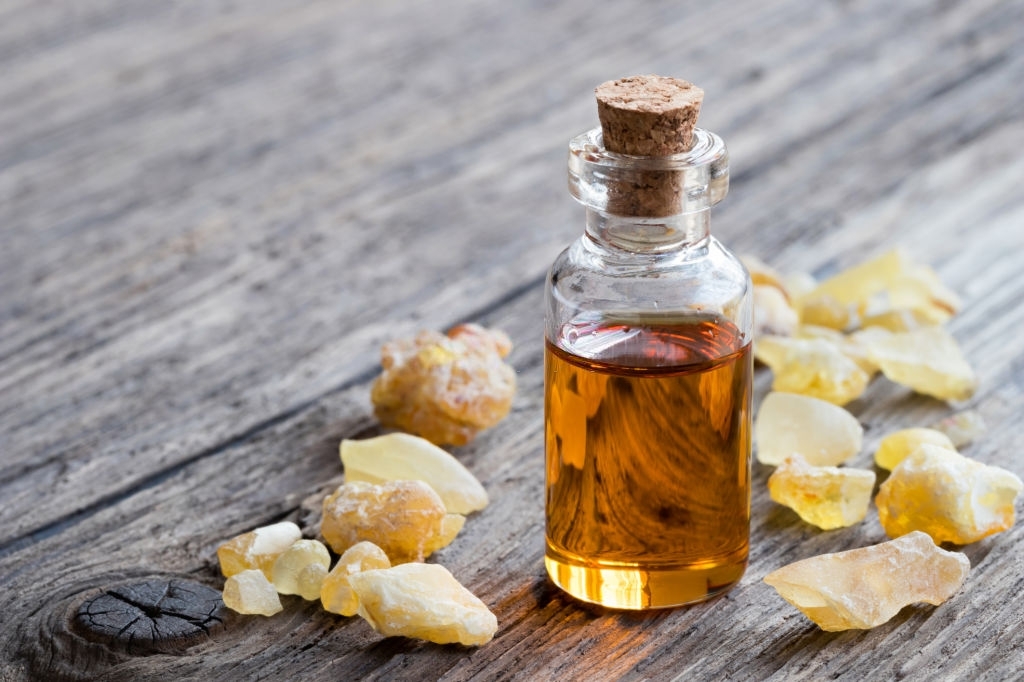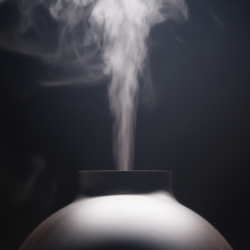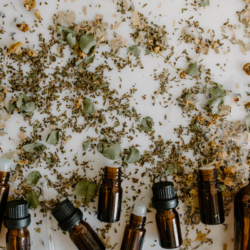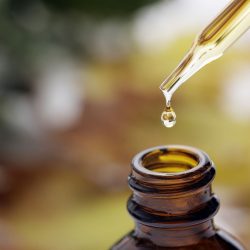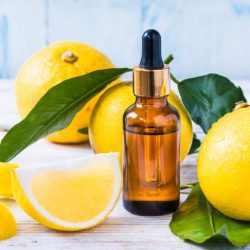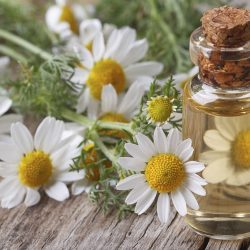Since ancient times, frankincense, along with myrrh and other aromatics, was among the drugs burned in temples during religious ceremonies. These odoriferous fumigations are also currently still in use and are part of the rites of current religions. A mythical and ritual plant of all civilizations of the Mediterranean basin, incense has therefore been the object of all desires. of the empires to appropriate the sites of production of odoriferous gum-resin.
From medieval theriacs to later compositions, incense is found in many masterful compositions . In the 19th century, with the advent of synthetic chemistry, the role of frankincense in the pharmacopoeia gradually diminished. It was not until the arrival of incense in the aromatherapy field to see it take on a new lease of life.
A little bit of mythology
Ovid , in his fourth metamorphosis, explains how and why incense was born. It is the relation of the Sun ( Apollo ) with Leucothoé which earned the latter to be buried alive by her own father. “From a body promised to decompose, the god had made a spice intended to link Earth and Heaven”. Frankincense, pure and healthy, is the emanation of the divine Sun through the figure of Apollo , while Leucothoé sacrificed is the one who, “despite everything, will ascend to heaven.” “
For a long time, during Antiquity, incense was more valuable than gold. It is perhaps this financial constraint which explains that in Roman times, we no longer give “incense to the gods except in crumbs”, says Pliny , who adds: “Besides, the gods were not no less auspicious when supplicated with salted flour; on the contrary, it is obvious, they were more benevolent ”.
We are far from the abundance and sometimes indecent lavishness of Nero and Alexander the Great . Because Nero did indeed burn for the funeral of his wife Poppea as much incense as Arabia could produce for a year, while Alexander the Great “having seized Arabia, sent a ship to Leonidas. loaded with incense and urged him to implore the gods without parsimony ”. But, as Ovid says in his eighth metamorphosis, if “piety is dear to the gods, the honors it pays them, it receives them in its turn. »When we know that Nero committed suicide and that Alexander the Great was probably poisoned, that says a lot about the piety of these two men.
A little history
The history of incense begins over 6000 years ago . It coincides with the appearance of the first great civilizations of Mesopotamia and Egypt . The original incense is considered to be one of the first fragrant materials to be used by humans. It was found in particular in the ingredients of balms which were used for the mummification of the Egyptians. It was also burned in the temples to communicate with the deities.
Known for thousands of years, the use of incense dates back to the oldest oriental religions , especially in India, where Ayurveda will use its qualities. But, in these remote times, it is less its medicinal properties which interest man.
The Egyptians make a ritual use of it during embalming, as evidenced by the engravings on the temple of Queen Hatshepsut (15th century BC) in Luxor, evoking the expeditions in search of frankincense trees in the land of Punt (Somalia). Later, the Greeks with the expedition of Alexander the Great (4th century BC), then the Romans with the expedition of Aelius Gallu (1st century BC) tried in vain to seize the incense-producing regions of South Arabia and Socotra. The Yemenis held a monopoly on this caravan trade until the 6th century.
Greek medicine recommended incense to strengthen the weakened stomach ( Galen , 2nd century), fight against phlegm , warm the liver and against fever . In Arab medicine, it is prescribed against diarrhea and vomiting, ulcers of the eye ( Razès , 10th century), cough, in fumigation against the plague and in masticatory for affections of the gums and teeth.
What are the pharmacological properties of Frankincense gum resin essence ?
Anti-inflammatory property:
Powerfully anti-inflammatory , frankincense essence is cortison-like , so it stimulates the pituitary-adrenal cortex and is useful in prolonged inflammatory states.
Antimicrobial property:
The effect antimicrobial of α-pinene has been shown in vitro vis-à-vis of Staphylococcus aureus, Escherichia coli, of Proteus mirabilis, of Pseudomonas aeruginosa and Klebsiella pneumoniae ; the antifungal effect has been demonstrated in vitro against Candida albicans and dermatophytes. Its antiviral side has been demonstrated against herpes – HSV-I).
Property on the central nervous system:
This essence has a central action on the rhythms of reordering and interior restructuring (physical, biological, immune, emotional and psychological). Harmonizing the central nervous system, it is also anxiolytic by local route, in manual massage.
Anti-cancer property:
Anti degenerative , this oil has stood out as an inducer of apoptosis in certain cancers. Cytotoxic to breast and kidney cancer cells, it is also cytotoxic to pancreatic cancer cells.
Other properties:
- Desclerosing
- Lymphotonic and decongestant
- Drying and drying of respiratory mucous membranes
- Analgesic
- Healing
- Immunostimulant (virus)
Does the essence of Incense require precautions for use?
- Avoid in combination with cortisone , risk of drug interaction
- Do not use over a prolonged period, at the risk of resting the pituitary-adrenal axis and suffering from acute adrenal insufficiency when you stop taking gasoline
- Avoid applying the essence in the evening (or before any rest period)
- Not recommended for people with osteoporosis , due to the inherent risk of decalcification
- Enzyme inhibitor, risk of drug interactions, ask your pharmacist for advice
- Dermocausticity, revulsive action on the skin in a pure state and aggressive for the mucous membranes (redness, irritation, pruritus), dilution required
- Contraindicated in pregnant or breastfeeding women as well as in children under 7 years old
- Not recommended for psychotic people
- Drug interactions with essential oils containing more than 10% ketones or phenols
- Authorized in animals
Medical bibliographic sources and clinical trials :
- Al-Harrasi A, Ali L, Hussain J, Rehman NU, Mehjabeen, Ahmed M, Al-Rawahi A. Analgesic effects of crude extracts and fractions of Omani frankincense obtained from traditional medicinal plant Boswellia sacra on animal models. Asian Pac J Trop Med. 2014
- Effects of aroma hand massage on pain, state anxiety and depression in hospice patients with terminal cancer. Taehan Kanho Hakhoe Chi. 2008
- Chen Y, Zhou C, Ge Z, et al. Composition and potential anticancer activities of essential oils obtained from myrrh and frankincense. Oncology Letters. 2013
- Mahmoud M Suhail, Weijuan Wu, Amy Cao, Fadee G Mondalek, Kar-Ming Fung, Pin-Tsen Shih, Yu-Ting Fang, Cole Woolley, Gary Young, Hsueh-Kung Lin. Boswellia sacra essential oil induces tumor cell-specific apoptosis and suppresses tumor aggressiveness in cultured human breast cancer cells. BMC Complementary and Alternative Medicine 2011
- Suhail MM, Wu W, Cao A, Mondalek FG, Fung KM, Shih PT, Fang YT, Woolley C, Young G, Lin HK. Boswellia sacra essential oil induces tumor cell-specific apoptosis and suppresses tumor aggressiveness in cultured human breast cancer cells. BMC Complement Altern Med. 2011
- Frank MB, Yang Q, Osban J, Azzarello JT, Saban MR, Saban R, Ashley RA, Welter JC, Fung KM, Lin HK. Frankincense oil derived from Boswellia carteri induces tumor cell specific cytotoxicity. BMC Complement Altern Med. 2009
- Ni X, Suhail MM, Yang Q, Cao A, Fung K, Postier RG, Woolley C, Young G, Zhang J, Lin H. Frankincense essential oil prepared from hydrodistillation of Boswellia sacra gum resins induces human pancreatic cancer cell death in cultures and in a xenograft murine model. BMC Complementary and Alternative Medicine 2012
- Frank A, Unger M. Analysis of frankincense from various Boswellia species with inhibitory activity on human drug metabolizing cytochrome P450 enzymes using liquid chromatography mass spectrometry after automated on-line extraction. J Chromatogr A. 2006

